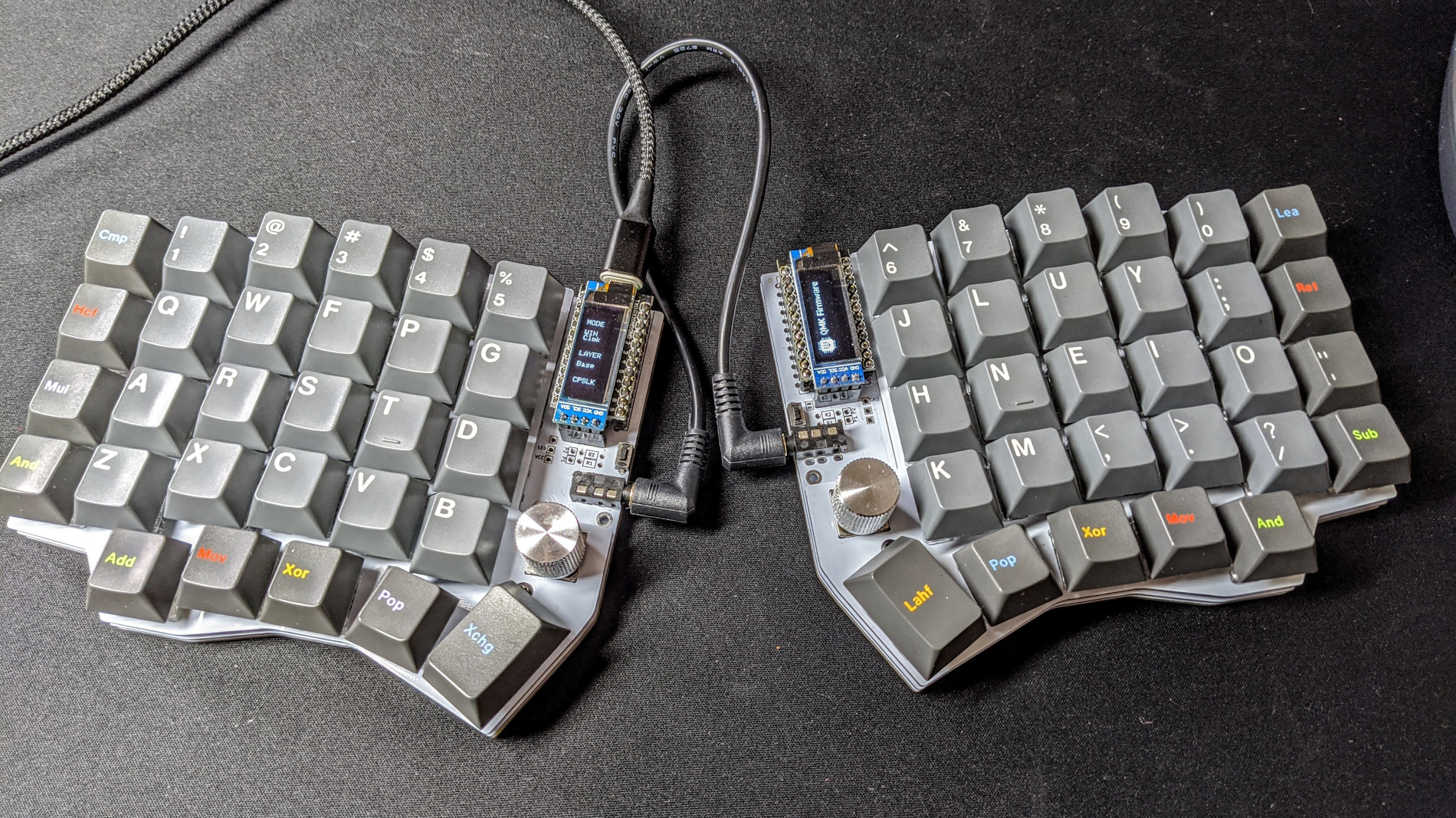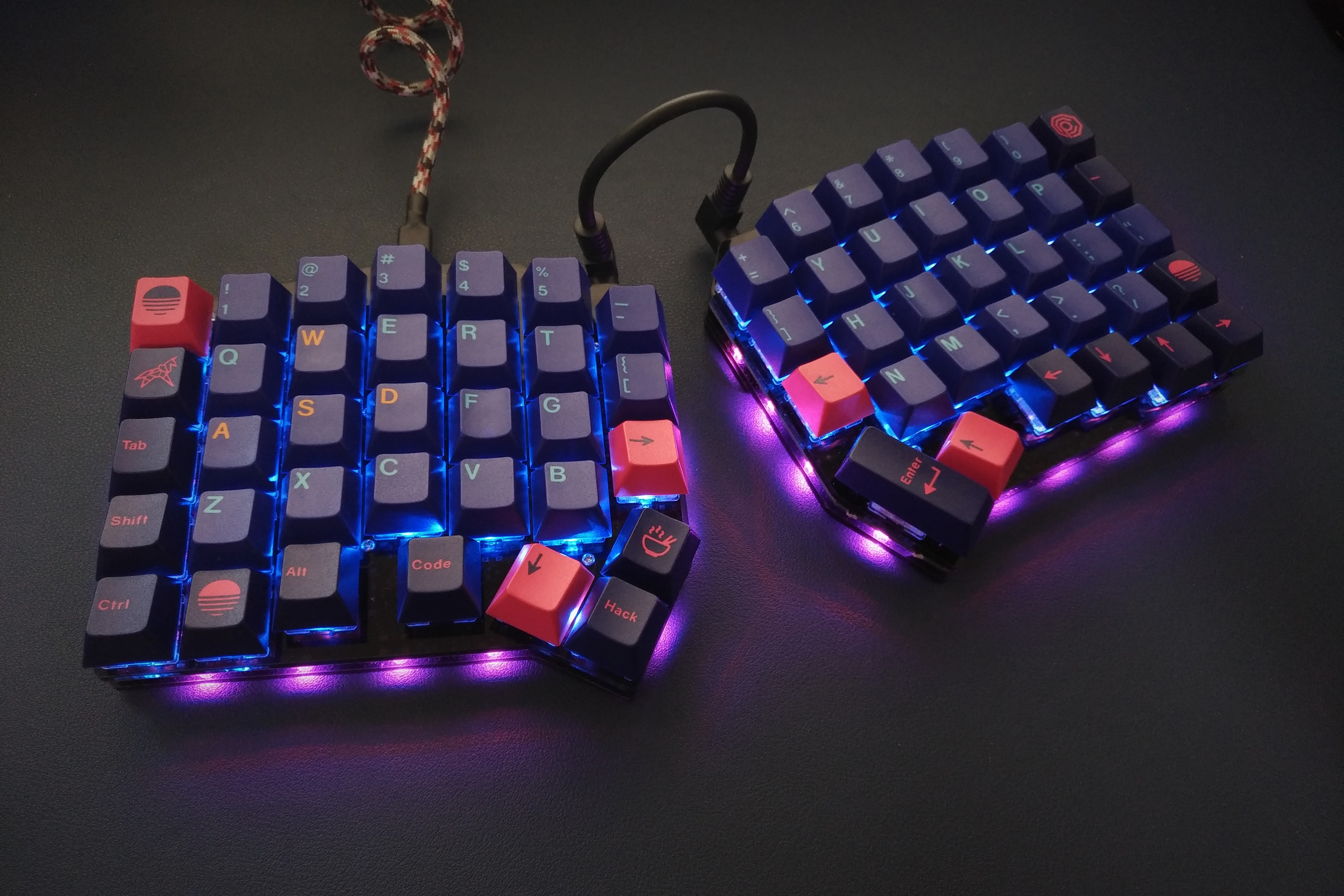Dusk Keyboard (part 1)
Recently, I have been interested in creating my own keyboard. This would allow me to position various keys in the way I like them and give me a learning opportunity for circuit design, KiCAD, and the like.
The design that really got me hooked was the Sofle Keyboard. I really liked the ergonomics of a split keyboard design, the OLED panel for simple data, and the potentiometer.

I saw this design from a Reddit post by u/apprecihate and fell in love.
Since then, I have been doing research on designing a custom keyboard and found some more interesting designs to reference. This design is called the ErgoDash and really like the key placement for the ctrl and alt keys.

More keyboard designs can be found here.
My design
Even though I really liked these two they each had one thing or another that I did not like. For the Sofle Keyboard, I really disliked that the ctrl and alt keys were unaccessible from my pinky in the usual location. And with the ErgoDash, I did not like that it did not have the OLED panel and the rotary encoder button. After giving it some thought, I came up with a set of requirements that I would like my new keyboard to have. I also decided to call my new keyboard Dusk Keyboard because I wanted to have a purple color scheme (If its not very apparent, purple is my favorite color). Also will name the respective macropad: Dusk Macropad. Since a macropad/numpad is simply a Ten-key “keyboard” I will refer to it interchangeably depending on the context.
Dusk Keyboard
ctrl,altkey must be in the pinky cluster- No
capskey. Replace withesckey win/superkey must be be in the thumb cluster- Contain rotary dial for analog control
- Can be reassigned in software to volume, etc
- 3 layers
- OLED Panel
- Must contain all the keys in a TKL (Ten-key less) keyboard
- Design a separate macropad/numpad
- Cherry MX keys
- Must be hot-swappable
- Must look aesthetic (dusk/purple color scheme)
- Use QMK
- Too much of a hassle to write custom firmware
And with that, I will be posting follow up posts about the development of this keyboard and macropad. I will be posting a final post once everything is finished and working as a one stop read all guide to the design.
The other parts to this series can be found on the left sidebar
